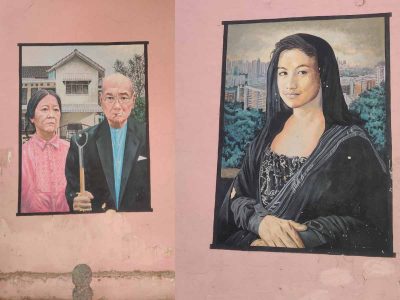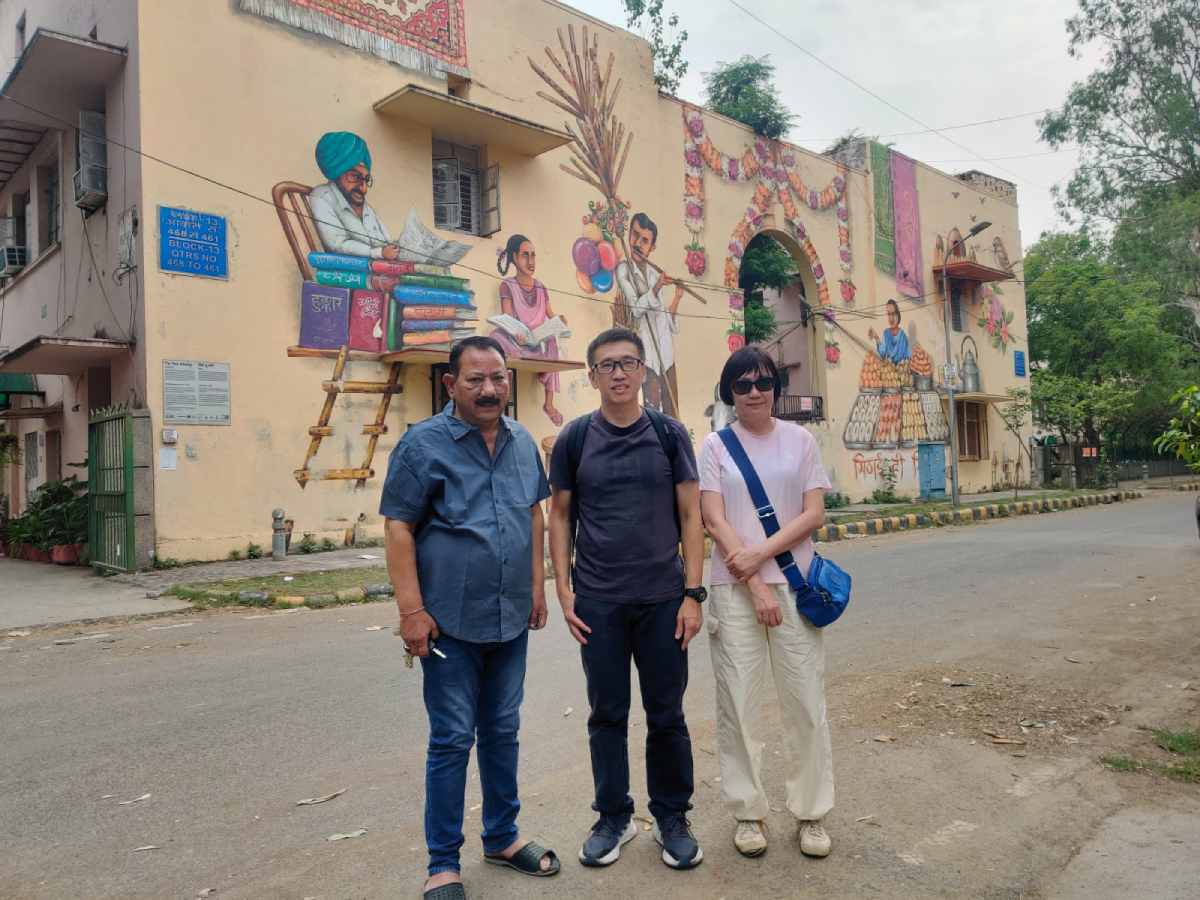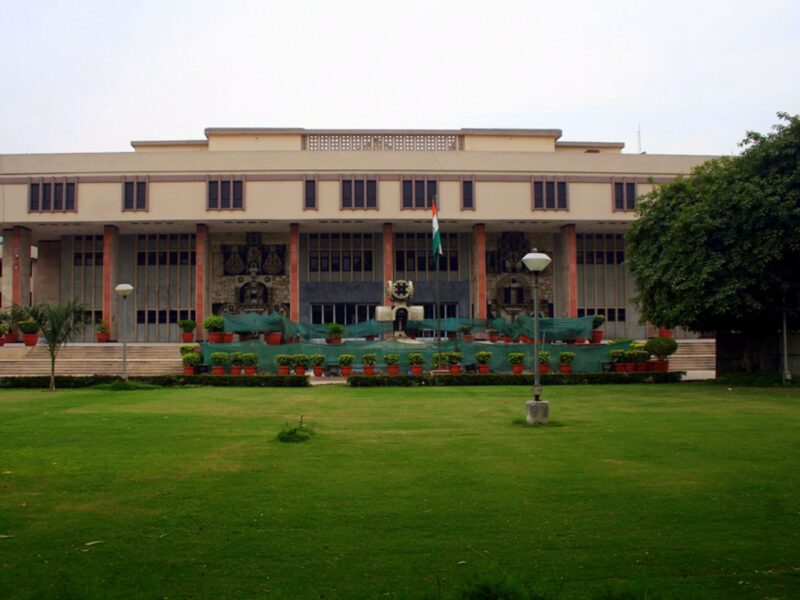The vibrant murals of Lodhi Colony have long captured the imagination of visitors and residents alike. Last week, one of the artists behind these striking works returned to revisit his contribution—Yip Yew Chong.
Yip, 56, is a renowned muralist from Singapore. Originally an accountant, his art often depicts scenes of yesteryear, heritage, and everyday life. This visit marked his first return to Lodhi Colony since 2019, and he was accompanied by his wife. The couple headed straight to the home of Anil Negi, a Lodhi Colony resident whom Yip had befriended while painting the area’s walls.
On May 5, Yip visited Lodhi Colony after a trip to Uttarkashi. He expressed relief that his work had stood the test of time and was still in good condition. A frequent traveller to India, Yip has journeyed extensively across the country and translated his experiences onto these walls.
One could say he paints the scenes he has witnessed and felt during his travels.
Also read: Delhi Pollution: May 2025 sees notable decline in poor AQI days
His most recognisable work?
Yip said one of his most recognisable murals is located in Block 7 of Lodhi Colony. It portrays a pet shop scene, complete with cages, birds, a shopkeeper, and customers.
Yip often portrays people, their interactions, and their environments—using walls as his canvas for storytelling. His work adds a unique dimension to the diversity of the Lodhi Art District, offering a glimpse into Indian life through the eyes of a foreign artist. Besides Singapore, Italy, and India, he has created murals in several other countries.
It may be recalled that the project to paint Lodhi Colony’s walls was initiated in 2014 by the St+art India Foundation, aiming to foster public art. Indeed, this initiative has transformed Lodhi Colony into an open-air art gallery, now featuring over 50 murals.

Other contributing artists
Several other artists, besides Yip, have also painted murals on Lodhi Colony’s walls, including Ranjit Dahiya and Anpu Varkey. The 150-foot-long black and white mural of Mahatma Gandhi on the old Delhi Police headquarters in IP Estate was a collaborative work by German artist Hendrik Beikirch and Varkey.
This 45-metre-high mural was unveiled in 2014. It is India’s tallest mural and was created in collaboration with the Delhi government to mark Martyr’s Day. It depicts Mahatma Gandhi and employed spray-painting techniques that were novel for Delhi, sparking public interest and conversation around street art.
Tihar Jail mural
If you are fond of murals, you must check out the Tihar Jail mural. It was created by students from College of Arts, Delhi along with various graffiti artists.
“Spanning 968 metres, this is India’s longest mural, featuring lines from a poem reflecting inmates’ feelings of isolation. Created in collaboration with prison authorities, it also involved workshops where inmates painted interior walls,” informs a senior Delhi Police officer.
First murals in the Capital
It is said that painter, sculptor, muralist, and architect Satish Gujral was the first to create murals on the walls of the capital. Gujral created murals at Odeon cinema hall, Shastri Bhawan, and the Delhi High Court.
The mural at Odeon, created in the 1950s, was one of Gujral’s earlier forays into large-scale public art. Placing a modern mural in a popular cinema hall like Odeon in the heart of Delhi was a significant step towards making contemporary art accessible to the general public.
Prem Bhutani, a film buff, recalls, “When I saw the mural at Odeon around four decades ago, I was awe-struck. I had not seen any mural before that.” He added that, like many public artworks from that era, the Odeon mural is perhaps now lost or covered up due to renovations over the decades.
Satish Gujral also created a mural at Shastri Bhawan. “The Shastri Bhawan mural stands as a testament to the effort to infuse modern Indian art into the official landscape of the capital, making a statement about national identity through contemporary artistic expression,” says A Sinha, a noted painter.
Also read: Delhi: Power demand reaches 6,867 MW, season’s highest so far
The destroyed murals of Vigyan Bhawan
Old-timers would tell you that the walls of Vigyan Bhawan once featured breathtaking murals by Amarnath Sehgal—a prominent sculptor and painter known for his modernist works, often centred on social themes.
One large mural depicted rural and scientific progress in India. However, it was destroyed in 1979 during a renovation of Vigyan Bhawan. The government claimed the mural was structurally unsound or not suited to the new aesthetic.
Sehgal was deeply aggrieved and considered it an act of cultural vandalism. He sued the Union of India. The case, Amarnath Sehgal vs Union of India, became a landmark judgment for the “moral rights” of artists in India, even if they no longer owned the physical work.
The court recognised the artist’s right to protect their work from distortion, mutilation, or destruction that would harm their honour or reputation. It ruled in Sehgal’s favour, awarded him damages, and acknowledged his moral rights. However, by then, the mural had already been destroyed.





